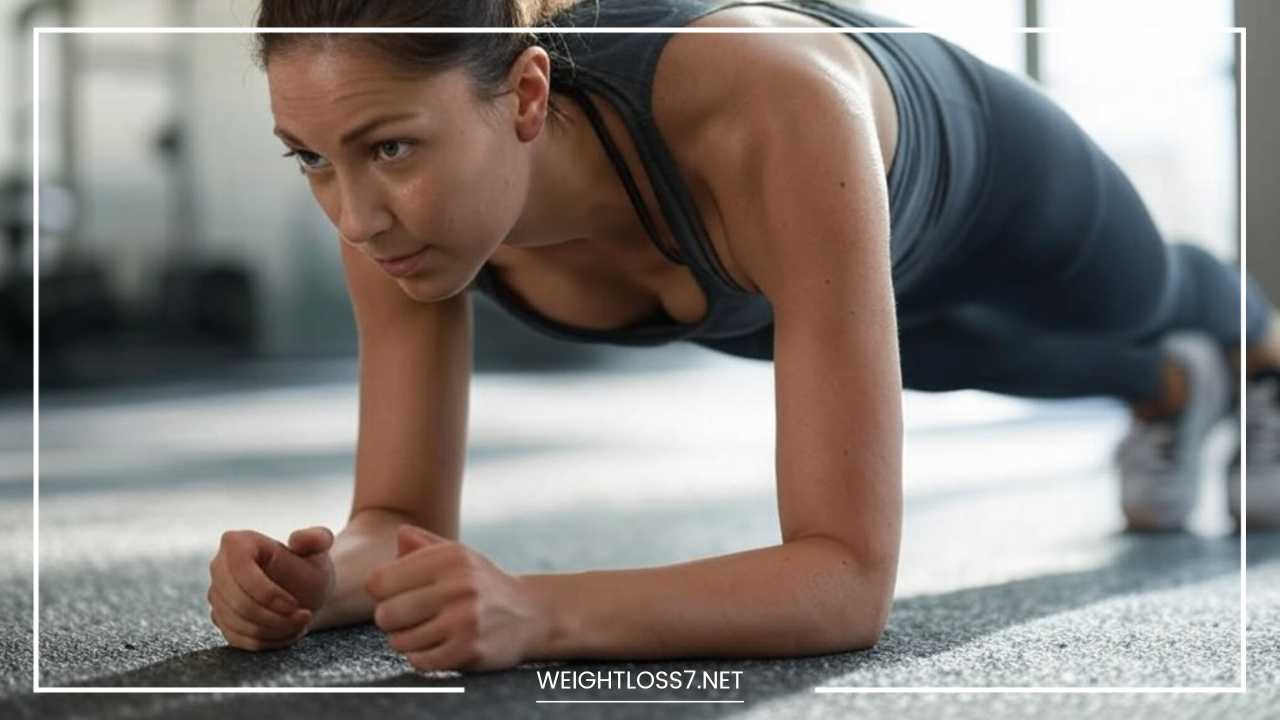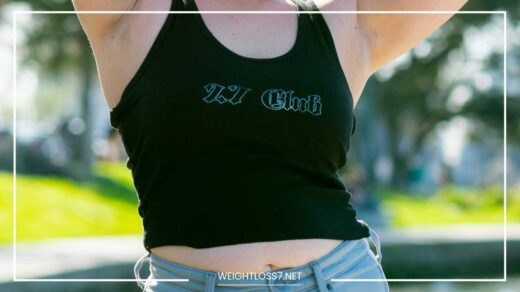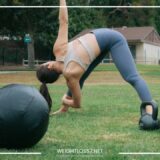What is Core Workout

Core Workout
Understanding Core Workouts: More Than Just Abs
When people talk about a “core workout,” many immediately think about doing sit-ups or crunches to target the abs.
However, the concept of the core extends far beyond just the muscles of the abdominal region. Your core is a complex network of muscles that spans from your pelvis to your ribcage, including the abdominal muscles, lower back muscles, and the deep muscles surrounding your spine.
It also includes muscles in the hips and pelvic region. Essentially, the core acts as a central link between your upper and lower body and is essential for nearly every movement you perform.
A strong core is a cornerstone of good posture, balance, stability, and functional fitness. It allows you to perform daily activities with ease and perform more complex movements, like lifting, running, and even sports, with proper technique and less risk of injury.
Core workouts specifically target these muscles to improve their strength, endurance, and stability, which leads to better overall physical performance and improved health.
The core plays a critical role in stabilizing the body during movement. When we talk about strengthening the core, we’re referring to exercises that improve the function of the muscles responsible for stabilizing your torso and spine.
These exercises train the deep stabilizing muscles, which are responsible for creating a foundation that other muscles can build upon.
So, even though a six-pack may be the most visible result of a well-developed core, the true benefits lie in the improvement of posture, balance, and strength.
Anatomy of the Core
To fully understand why core workouts are essential, let’s break down the muscles that make up the core:
- Abdominals: These are the muscles we often associate with the core, including the rectus abdominis (the “six-pack” muscles), the obliques (the muscles on the sides of your abdomen), and the transverse abdominis (the deepest layer of abdominal muscles that wraps around your spine and acts like a corset, helping with stability).
- Lower Back Muscles: The muscles of the lower back, including the erector spinae, help with posture and provide support when lifting, bending, or twisting.
- Pelvic Floor Muscles: These muscles are located at the base of your pelvis and play a significant role in stabilizing your core. Strengthening these muscles can improve bladder control, sexual health, and posture.
- Diaphragm: While not usually thought of as a core muscle, the diaphragm works in conjunction with the abdominal muscles to provide stability during movement, especially when you’re engaging your core in activities like weightlifting or running.
- Hip Muscles: While primarily associated with movement, the muscles of the hips, including the hip flexors, adductors, and glutes, also contribute to core stability and function.
The Importance of a Strong Core
A strong core provides several physical benefits that can greatly improve your day-to-day life. Here’s why core training is so important:
- Improved Posture: A strong core supports your spine, leading to better posture. When your core is weak, other muscles, like those in your back and shoulders, have to compensate, which can result in slouching, back pain, and discomfort.
- Enhanced Balance and Stability: Balance isn’t just about standing on one foot—it’s about controlling your body’s position while moving. A stable core helps you stay balanced during physical activities, from running to lifting to playing sports. Whether you’re walking down stairs, getting out of a chair, or reaching for something on a high shelf, a strong core supports your body’s ability to stay balanced.
- Injury Prevention: Weak core muscles can lead to poor posture, which in turn can cause imbalances and improper movement patterns. This increases the risk of injury, especially to the lower back. Core strength helps protect the spine and improve the efficiency of your movements.
- Increased Strength and Performance: Many movements, whether they involve lifting, twisting, or bending, rely heavily on the strength and stability of the core. By training the core, you improve overall strength and functional capacity, making it easier to perform daily tasks, sports, and other physical activities.
- Better Breathing and Circulation: Deep core muscles work in conjunction with the diaphragm to improve breathing. Proper core engagement can help optimize your breathing and reduce unnecessary tension in the body, allowing you to breathe more efficiently.
How Long Should a Core Workout Be?
A core workout’s duration can vary significantly depending on your fitness level, the type of workout, and your specific goals.
Generally speaking, core workouts can range anywhere from 10-15 minutes for beginners to 30-45 minutes for more advanced fitness levels.
- Beginners (10-15 minutes): If you’re new to exercising or core workouts, start with short, manageable sessions. Begin by performing a small number of exercises, focusing on form and engaging your core correctly. Doing too much too soon can lead to injury, so keep your initial workouts brief and gradually increase the intensity and duration.
- Intermediate to Advanced (20-30 minutes): As you become more comfortable with core exercises, you can increase the length of your sessions. For those who are more experienced, core workouts can be longer, allowing for multiple sets of various exercises. A well-rounded workout at this level could target different areas of the core (front, sides, back) for greater variety and challenge.
- Extended Sessions (30-45 minutes): Advanced core workouts typically involve higher intensity exercises, or a combination of core exercises and other movements, such as strength training or cardio. These sessions may include supersets, circuit training, or incorporating other modalities such as Pilates or yoga. These longer workouts are great for individuals who are training for a specific sport or need to build substantial core strength and endurance.
Remember, consistency is key. You don’t need to spend hours every day focusing on your core. A short but regular core workout 2-3 times a week is sufficient for most people to see significant improvements in strength, stability, and overall functional fitness.
Does Core Workout Burn Belly Fat?
One of the most common misconceptions about core workouts is that they specifically burn belly fat or target fat loss in the abdominal region.
Unfortunately, this is a myth. The concept of “spot reduction”—the idea that you can burn fat in a specific area of your body by doing targeted exercises—is not supported by science.
While core exercises can strengthen and tone the muscles of the abdomen, they don’t directly burn fat in that area.
Fat loss occurs throughout the entire body and is influenced by overall calorie expenditure. The best way to lose belly fat is by creating a calorie deficit, meaning you burn more calories than you consume, through a combination of:
- Cardiovascular Exercise: Activities like running, cycling, swimming, and high-intensity interval training (HIIT) can help burn calories and promote fat loss.
- Strength Training: Full-body strength training workouts, such as lifting weights, build muscle, which in turn helps increase your metabolism and promotes fat burning.
- Diet: Eating a well-balanced, calorie-controlled diet that includes plenty of whole foods (vegetables, lean protein, healthy fats) and limits processed foods and sugary beverages is essential for losing fat.
While core workouts won’t directly melt belly fat, they are still essential for building lean muscle, improving posture, and sculpting a toned midsection once fat loss has been achieved.
How Many Core Exercises Per Workout?
The number of core exercises you include in your workout depends on a few factors, including your fitness level, your goals, and the length of your workout.
For a well-balanced core workout, it’s recommended to target all areas of the core: the abdominals, obliques, and lower back muscles.
- Beginners: If you’re new to core training, aim for 2-3 exercises per workout, focusing on basic movements that activate the abdominal muscles and lower back. Simple exercises like planks, dead bugs, and leg raises are excellent starting points.
- Intermediate: As you gain strength, you can increase the number of exercises to 4-6. You might also add more advanced movements like Russian twists, mountain climbers, or stability ball exercises.
- Advanced: For those with a high level of fitness, consider incorporating 6-8 exercises per workout, using a combination of static holds, dynamic movements, and rotation exercises. You can also incorporate weights or resistance bands for additional challenge.
Generally, it’s important to keep the workout balanced, ensuring you’re engaging all parts of the core.
This helps prevent muscle imbalances and ensures functional stability for everyday movements. Most core workouts should last anywhere from 15-30 minutes.
Can You Workout Core Every Day?
The core muscles, like any other muscle group in your body, need time to recover between workouts. While it might seem tempting to train your core every day to build strength quickly, it’s important to give your muscles time to rest and repair.
Overtraining the core can lead to muscle fatigue, increased risk of injury, and diminished results.
Therefore, it’s generally recommended to train the core 2-3 times per week, with rest days in between. This allows the muscles time to recover, while still providing enough stimulus for growth and improvement.
That said, you can engage your core on non-core training days by focusing on other types of exercise that require core stability, like running, swimming, or yoga. Just be mindful not to overdo it and to listen to your body’s needs for recovery.
What is the Best Core Workout?
The best core workout is one that targets all the major muscle groups in the area: the abdominals, obliques, lower back, and pelvic floor.
A balanced routine should involve a combination of exercises that challenge different aspects of core strength, such as stability, endurance, and flexibility.
Here are some of the most effective core exercises to include in your routine:
- Planks: Planks are one of the most effective core exercises, engaging the entire core. Try front planks and side planks to target different areas.
- Crunches: Traditional crunches focus on the rectus abdominis, the “six-pack” muscles.
- Leg Raises: This exercise primarily targets the lower abs and helps build lower body stability.
- Russian Twists: This movement works the obliques and improves rotational strength.
- Bird Dogs: A great exercise for improving stability and engaging the deep core muscles.
- Bridges: Bridges activate the glutes and lower back, complementing the abdominals for overall core strength.
- Dead Bugs: This is an excellent exercise for improving core stability while engaging the abdominals and lower back.
The best core workout is one that is varied and progressively challenging. Incorporating a range of exercises and increasing the difficulty as you become stronger is key to achieving lasting results.
Final Thoughts: The Power of a Strong Core
A well-developed core isn’t just about aesthetics—it’s about building a solid foundation for overall fitness, injury prevention, and functional strength.
Whether you’re aiming to improve posture, boost athletic performance, or simply feel stronger and more stable in daily life, core workouts should be an integral part of your fitness routine.
While the process of building a strong core takes time and consistency, the benefits far outweigh the effort.
So, whether you’re a beginner or an experienced athlete, focus on developing your core strength and enjoy the increased stability, balance, and confidence it brings to all areas of your life.

















